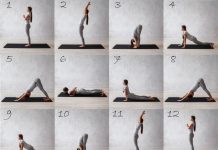Most countries these days have economies that are predicated upon exponential growth, therefore we’ve created consumeristic cultures to support this growth.
More is better isn’t just an expression, it’s a way of life. Which means that depending on where you are in your journey even contemplating a label like “Minimalist” will either scare the daylights out of you or be a beacon of light, a relief from the rat race.
In this article we’ll take a look at what minimalism is and 3 rules that you can experiment with to begin your journey if you’re so inclined. These 3 “rules” represent a few of the highlights of those mentioned in The Minimalist Rulebook: 16 Rules for Living with Less by Joshua Fields Millburn. If they resonate with you, you are encouraged to read the free eBook in its entirety to dig a bit deeper.
“Being a minimalist doesn’t mean you’ll never buy anything new. It means you’ll do so with intention. It also means you’ll let go aggressively and deliberately.”
–Joshua Fields Milburn
Why is it so difficult to purchase with a purpose or to give away? Because we identify with our stuff.
Our stuff gives us both a literal and figurative anchor in the world. So, throwing out our things or depriving ourselves of new things is almost like throwing away a part of ourselves that once was or never came to fruition.
“How could I possibly be sophisticated and tech savvy if I don’t have BOTH the new iPhone and those trendy cropped pants everyone is wearing?”
In any case, minimalism encourages us to ask these uncomfortable questions instead of succumbing to our consumer urges. It pushes us to reckon with our illusions. The illusions about who we are and where our value lies, forcing us towards a deeper spiritual journey.
Throughout this article the word “rule” is used a lot but really these points should be viewed as signposts or guides to lead you in the direction of self-discovery. They are not tools of depravity!
1. The Seasonality, AKA 90/90 rule
Give yourself time with this one to go through every item in every room of your house. Look at each item individually. If you haven’t used the possession in the last 90 days or don’t see yourself using it in the next 90 days, let it go. By giving a 3-month margin in the past and the future this rule covers all seasons and is especially helpful with clothing.
With items like art that don’t have an actual purpose other than to provide beauty you might want to ask yourself if as Marie Kondo says it still “sparks joy?” If not, try moving it to a new place in your house where perhaps the feng shui might be better, giving it to a friend or donating it. While you’re at it, copy those cds and photos with a computer and scanner. And at the very least get rid of the cds, even if you’re not ready to let the photos go and back them up to the cloud.
- The 1 and 10 rule
Feeling the pull of impulse shopping after letting all of those items go? Well for every one item you purchase, give away or sell 10 items in the same category. We’re of course not talking about essentials category like toilet paper. But rather non-essential or junk items. Non-essential items are items that perhaps we use regularly because they enhance our life in some way like our phone, TV, or juicer, but aren’t necessary. Junk items are just that, items that serve no purpose and we really don’t even like if we’re honest about it. Junk is stuff hanging around “just in case” the right occasion comes along or it happens to come back in style.
- 10 most expensive possessions rule
Make a list of the 10 most expensive things that you own and then make a list of the 10 most important experiences you’ve had in your life. Compare the lists to see if they have anything in common. You’ll find in many cases the most meaningful experiences you’ve had and expensive things you own have little to do with one another. And even if they do have something in common, in most cases, you’ll realize what truly made the experience great was not the actual “thing” that was involved, but rather your state of being.
In any case rule 3 really helps you to put what you have in perspective. While your experiences can be a reflection of your happiness or growth, the things that you possess, even your physical characteristics like weight and hair color cannot. The old adage, “you can’t take it with you” can either mean something for you whilst you are living or only become a realization at the time of your death. Whether you choose to label yourself a minimalist is neither here nor there. But rather the question is how deliberately do you engage with the physical world whilst on your spiritual journey and what purpose are you TRULY expecting things to serve for you?
47 Most Famous Motivational Quotes of All-Time
49 Greatest Love Quotes
37 Inspirational Quotes that Will Change Your Life






























